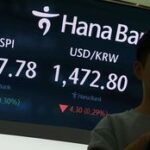
There are growing concerns about the potential merger between Honda and Nissan. Optimistic projections suggest that the merger will result in economies of scale, with annual sales of more than 8 million vehicles. However, critics argue that this calculation is based on 20th-century rules. Furthermore, while the merger could potentially create the world’s third-largest auto group, there are doubts about whether this can be achieved in time in the current fiercely competitive environment.
Honda and Nissan aim to create synergies worth more than 1 trillion yen ($6.4 billion) through platform sharing, joint R&D, and joint procurement. While this target may seem like a significant amount of synergy by traditional standards, Honda President Toshihiro Mibe sees the synergies as visible after 2030. It is also unclear how engineers from two companies with entirely different cultures will be able to work together.
The model lineup is also a stumbling block. Honda and Nissan have their own hybrid systems, likely leading to duplicate investments. At the same time, building a portfolio of battery-electric vehicles requires huge R&D costs. Platform sharing can reduce costs, but developing it requires considerable time. It took 15 years for the Renault-Nissan Alliance to share platforms; even then, it was not perfect.
Another problem is the lack of competitiveness in China, the world’s largest market. In particular, the competitiveness is weak in software-centric functions and in-vehicle digital experiences. Traditional automakers, including Honda and Nissan, are gradually losing their presence in the Chinese market. Moody’s Ratings analyst Dean Enjo highlighted the challenges of transitioning the Chinese business, emphasizing its significant execution risks.
Honda and Nissan are strong in the U.S. and Japanese markets, but overlapping issues in those markets raise questions about whether the merger will be able to generate synergies. Morgan Stanley analysts commented on the merger talks, noting that incumbent automakers facing technological challenges could be reduced to smaller companies with higher capital expenditures and R&D costs if they fail to secure new partners. They also predicted that further consolidation in the industry would likely occur in the future.
As seen in the case of the Stellantis Group, there are precedents where the economies of scale initially expected from a merger were not maintained but reduced. Even if Honda, Nissan, and Mitsubishi merge and achieve sales of more than 8 million units, they may experience similar results.
The question is whether they can afford the astronomical investment costs of transitioning to software-centric vehicles. As the Volkswagen case shows, no global vehicle company has developed its software and completed a digital chassis.
Ultimately, it doesn’t matter whether a company ranks third or fourth in the auto industry. What matters is its ability to understand and adapt to the new rules of the 21st-century auto industry.















Most Commented